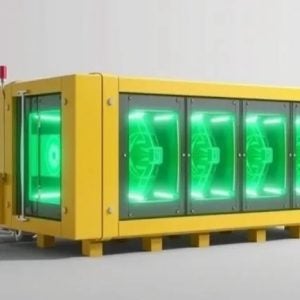China General Nuclear Power (CGN) and rival China National Nuclear Company (CNNC) have announced plans to build four more reactors in China based on the indigenous Hualong One design, according to the South China Morning Post. CGN plans to deploy the Hualong One design for units 5 and 6 at its Ningde NPP in Fujian province, while CNNC intends to use the Hualong One design for the first two reactors of a proposed project in Zhangzhou, also in Fujian, Mao Qing, the Hualong One’s deputy chief designer, was quoted as saying.
Yang Maochun, CGN’s deputy general manager of international nuclear power business development, said a licensing application had been made for the Ningde reactors and it was awaiting regulatory approval. Mao declined to provide details of the potential investments involved or construction timetable for the Ningde projects.
Hualong One was developed by CGN and CNNC based on generation 3 technologies from foreign firms. CGN has upgraded French firm Areva’s 3G technology, while CNNC has made improvements on American firm Westinghouse’s 3G technology. Both have claimed intellectual property rights on the improvements. CGN and CNNC both came up with their own versions of 3G products in late 2011, but the National Energy Administration, which regulates the sector, ordered them to merge their designs into what is now known as Hualong One to pool resources and avoid direct competition in overseas markets.
Mao said the targeted construction cost of Hualong One was $2.5m per megawatt of installed capacity when production was scaled up. CGN vice-president Zheng Dongshan said the cost would be "competitive" in the global 3G reactor market. Zheng said CGN and CNNC were both competitors and business partners with Westinghouse and Areva, depending on the project.
CGN started site preparation for one Hualong One reactor in Fangchenggang, Guangxi, in December, with trial operation scheduled to start in 2020. CNNC began construction of two Hualong One reactors last year, one in May and the other in December. Both firms are also pursuing export opportunities. CGN is seeking to build Hualong One reactors in Britain, Thailand and Kenya, while CNNC is pursuing Hualong One projects in Pakistan and Argentina.
Meanwhile, CGN has loaded eight lead fuel assemblies of its own design at unit 1 of Phase II of the Ling Ao NPP (also known as Ling Ao 3) in Guangdong province, a statement said. The assemblies included four each of two different designs, both being loaded for the first time in a commercial reactor, CGN said. The four STEP-12 fuel assemblies and four CZ zirconium alloy tube assemblies were loaded into the reactor on 14 February.
The assemblies will now undergo irradiation tests to validate their performance. The loading of the assemblies is a breakthrough for CGN in nuclear technology self-reliance, the company said. Ling Ao 3 is a Chinese CPR-1000 pressurised water reactor which began commercial operation in September 2010.
CGN said that once the components have been irradiated in the reactor, they will undergo a comprehensive physical examination, including visual inspection and measurement of the thickness of the oxide film on the cladding. The results will be used to optimize the fuel assembly design. The company said the STEP-12 fuel assembly and CZ zirconium alloy could be used in its existing fleet of second-generation CPR1000 reactors, as well as in developing fuel for Hualong One.
In January, CNNC announced that its own prototype fuel assembly for use in the Hualong One – China Fuel 3 (CF3) – had completed the first fuel cycle irradiation test. The assembly was irradiated in unit 2 of CNNC’s Qinshan NPP in Zhejiang province.






